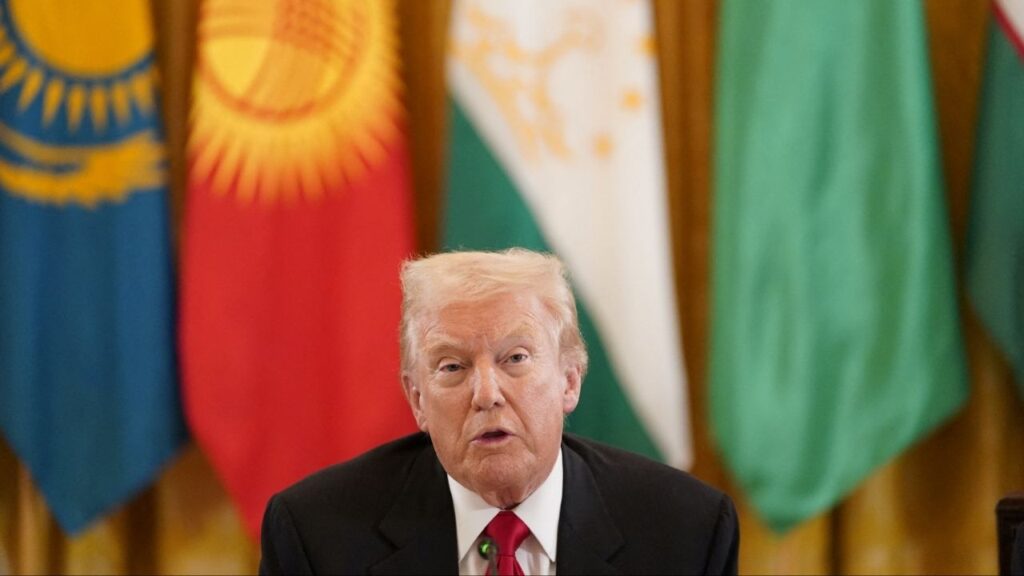FILE — Shoppers at Century City Mall in Los Angeles, May 17, 2025. Economists say that the impact of new tariffs will be much more significant this summer. (Gabriela Bhaskar/The New York Times)

- Economists predict tariff-driven inflation will emerge this summer despite muted May data.
- Retailers' inventory stockpiles are temporarily buffering consumers from price increases.
- Federal Reserve maintains wait-and-see approach as tariff impacts remain uncertain.
Share
Tariffs raise consumer prices. It’s a view held by most economists since long before President Donald Trump entered the White House.
Prices rose when Trump imposed levies on China in his first term, though that did not translate to noticeably higher inflation overall. Forecasters have been bracing for months for it to happen again on a much larger scale, given that his tariffs this time are substantially larger and more widespread.
But data released this week showed that inflationary pressures remained more muted than expected at this stage, raising an uncomfortable question for economists: Are their predictions wrong?
Economists Remain Confident Despite Muted Data
Economists are undeterred — for now. It’s not that tariffs aren’t affecting prices, they say. It’s that this isn’t happening in a significant enough way just yet to show up in broad measures of inflation such as the consumer price index. They argue that the impact will be much more significant this summer.
“Inflation is very likely going to increase,” said Marc Giannoni, chief U.S. economist at Barclays, who formerly worked at the Federal Reserve’s regional banks in Dallas and New York. “It is a question of time, not so much of if.”
Trump’s tariffs have already rippled through the economy in several ways.
Businesses rushed to stock up on products before levies were imposed, and now imports of foreign goods are down sharply. Uncertainty has skyrocketed, stoked by the administration’s frequent pivots on its trade policy. On Thursday, it announced that steel tariffs would soon apply to appliances made with the metal, including dishwashers, washing machines and refrigerators.
This back-and-forth has stirred up anxiety about the economic outlook, sending consumer sentiment plummeting and expectations about inflation higher. Americans, under more financial strain, have since become choosier about how they spend their money.
Mixed Signals in Price Data
But in the price-tracking data, the evidence is much more uneven. April’s inflation reports — measuring consumer and producer prices — showed the early imprint of tariffs. Goods most exposed to the levies, like furniture and audio equipment, became more expensive.
But in May, instead of broadening out to other products as economists had anticipated, prices that had risen retreated, while goods that had gotten cheaper instead became more expensive.
The consumer price index rose 0.1% in May, or 2.4% from a year earlier, a release on Wednesday showed. A day later, the government reported that U.S. wholesale prices had risen the same 0.1% last month, registering a 2.6% annual pace.
Omair Sharif, founder of the research firm Inflation Insights, attributed May’s “seesaw pattern” to the buildup in inventories that retailers amassed this year. That created a buffer for sellers to offer discounts, such as around Memorial Day, and generally hold off on raising prices until those stockpiles run out.
The first trade war offers some lessons.
That cycle can take several months, as Trump’s first-term trade war showed. Washing machines, which were directly affected by the president’s tariffs in 2018, did not immediately get more expensive. But after about five months, the higher costs were passed on nearly “one to one” to consumers, Sharif said.
The pandemic-era inflation surge also offers some lessons. Shipping costs soared back then as supply chain snarls collided with strong demand for everyday items typically produced overseas. Research conducted by staff at the Federal Reserve Bank of Kansas City showed it took 12 to 18 months for those higher costs to fully pass through to consumer prices.
“It’s a matter of time before we really get everything pulling in the same direction,” Sharif said, adding that it could just be a handful of months.
Consumer Resistance Could Limit Price Increases
The milder data could mean that the forthcoming inflation spike may be more contained than once feared, however. That view is contingent on Trump’s holding off on raising current tariff rates or threatening new levies, a big unknown when his administration has hinted that the deadline for minting trade deals may be pushed back.
It also depends on how consumers are faring. Layoffs are still low, but it is becoming harder for people who want to work to find jobs. Wages are also not growing as fast as they did when inflation was soaring after the pandemic. In a sign that people are starting to cut back on spending against this backdrop, airline fares dropped again in May.
“Given that we’ve had inflation increase so much over the last few years cumulatively, I think there’s significantly higher resistance among consumers to accept higher prices,” said Thomas Simons, chief U.S. economist at Jefferies. “They are more likely to shift around their consumption to go after things that are better value.”
Businesses could find it harder to pass along price increases than they could in a more robust economic environment. Make products too expensive and they risk driving down demand.
For this reason, Giannoni at Barclays does not expect tariff-related costs to be fully passed along to consumers. Instead, businesses and suppliers will absorb about half the increase, eating into their profits.
Such an uncertain outlook for inflation presents a conundrum for the Federal Reserve, whose officials will gather next week for their next meeting. The central bank is widely expected to hold interest rates at 4.25% to 4.5%, the level in place since January. For now, its policymakers appear wedded to a wait-and-see approach: holding off on big policy decisions until they have more clarity not only on Trump’s policies but also on the economic impact.
Like most economists, Fed officials believe tariffs will raise inflation while denting growth, although they have made clear that it is too soon to know what the magnitude of the hit on both fronts will be.
If the inflationary effects of tariffs end up far more benign than initially expected, the Fed would have more flexibility to restart interest rate cuts sooner. And economists would be rethinking their expectations.
“I would be very, very surprised if we don’t see some stronger inflation prints in the next several months,” Giannoni said. “If inflation continues to be very muted, we’ll have to go back to the drawing board.”
—
This article originally appeared in The New York Times.
By Colby Smith/Gabriela Bhaskar
c. 2025 The New York Times Company
RELATED TOPICS:
Categories

Kazakhstan to Join Abraham Accords, Trump Says

Who Will Replace Pelosi in Congress?


















